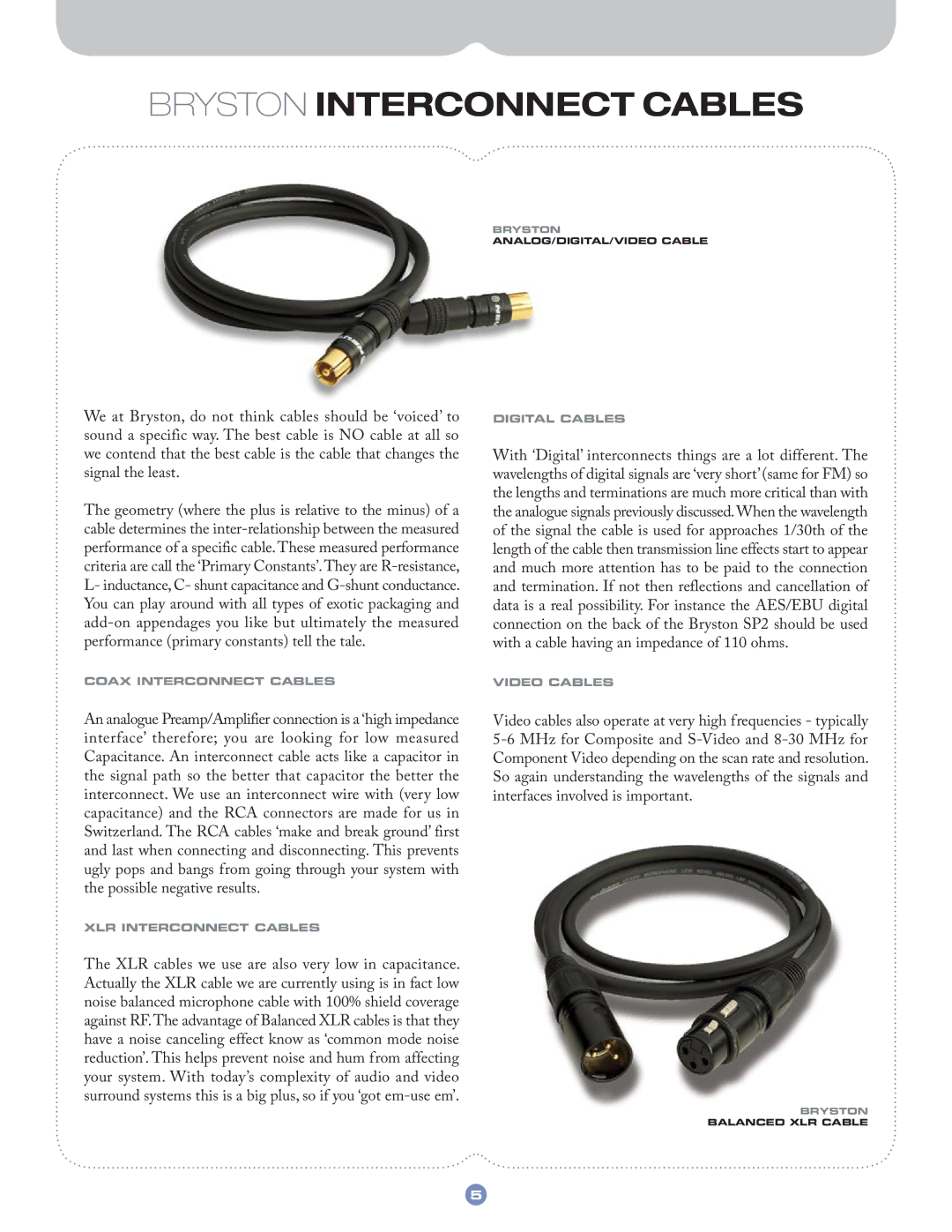10B, 10B LR specifications
The Bryston 10B and 10B LR are sophisticated electronic crossovers that have established themselves as benchmarks in high-performance audio systems. These units are designed to optimize the sound reproduction of speaker systems by splitting audio signals into different frequency bands, allowing each band to be routed to the appropriate amplifier and speaker driver for enhanced performance.One of the standout features of the Bryston 10B is its modular design that offers flexibility to adapt to various sound system configurations. Users can configure the crossover according to their specific audio needs, whether for home theater systems, live sound, or high-fidelity stereo setups. The 10B provides a range of crossover frequency settings, allowing for precise tuning tailored to the characteristics of the speakers in use.
The 10B model is known for its pure analog signal path, which contributes to its transparent sound quality. Bryston has built the 10B using high-quality components, including precision capacitors and resistors, ensuring minimal signal degradation. The crossover employs state-of-the-art filtering techniques, providing steep roll-offs that effectively separate different frequency bands, thus reducing distortion and enhancing clarity.
With the 10B LR model, users benefit from Linkwitz-Riley filters that ensure a smooth transition between frequency bands, which is especially crucial for accurate stereo imaging. The unique design of the 10B LR not only improves phase coherence but also reduces the likelihood of interference between drivers, resulting in a more cohesive and engaging listening experience.
Another significant characteristic of the Bryston 10B and 10B LR is their robust build quality. Constructed in a rugged chassis, these units are designed to withstand the rigors of both professional and home environments. Additionally, Bryston's commitment to performance is mirrored in the lifetime warranty offered on these products, reflecting their confidence in the durability and reliability of their crossover technology.
In summary, the Bryston 10B and 10B LR stand out in the realm of audio engineering for their versatility, advanced filtering technology, and commitment to sound quality. Whether for audiophiles seeking perfection in their home audio systems or professionals requiring reliability in live sound applications, these crossovers deliver exceptional performance that elevates the listening experience to new heights.

